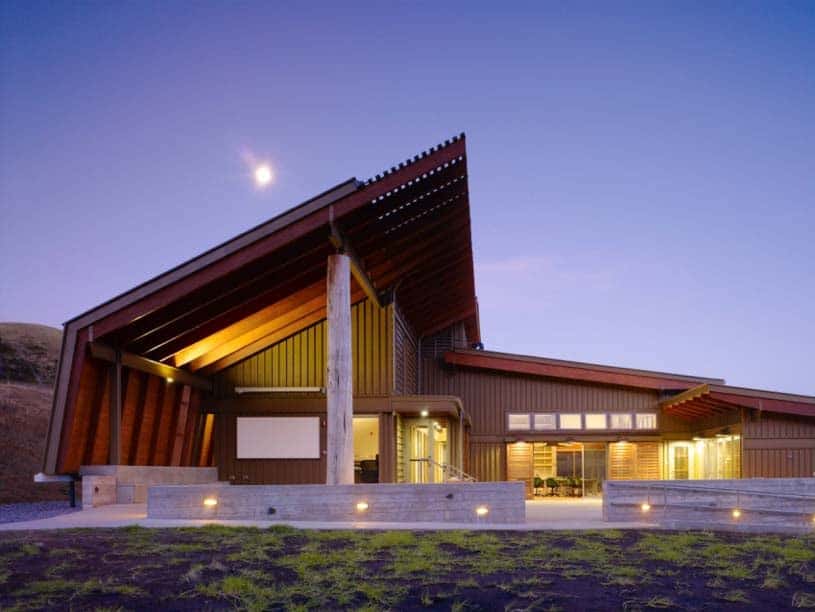The Two Most Important Things We Don’t Teach

While last year was a global human tragedy, it is not likely that pandemic will be the change force that most shapes the lives and livelihoods of young people, it’s the climate crisis and artificial intelligence (AI). Unfortunately, it’s easy to leave high school and college without having considered either.
Both factors will influence where and how people live, how they earn a living and the politics of the common good. Both have built-in accelerators that will expand inequality and negatively impact those least advantaged.
Young people deserve a chance to learn about climate change and AI and develop an informed opinion about the path forward and where they can make a difference.
On Climate
The Anthropocene, the geological epoch spanning significant human impact on Earth’s geology and ecosystems, is currently expressed as a climate crisis and mass extinction event.
Temperatures have risen about 1.1°C and are heading rapidly toward 1.5°C where things get really ugly for the least advantaged on earth–more storms and floods, more fires and famine, more mass dislocation and immigration. “It is worse, much worse than you think,” said David Wallace-Wells, author of The Uninhabitable Earth, about life on Earth after warming.
The only answer is a full-court press on mitigation and adaptation–that’s playing offense and defense simultaneously–on a global scale. The massive impacts of climate change and efforts to fight it should have big implications for the science and civics curriculum as well as career advisement.
For a current and comprehensive discussion of solutions, check out Bill Gates’s new book, How to Avoid a Climate Disaster: The Solutions We Have and the Breakthroughs We Need. Listen to the new Gimlet podcast How to Save a Planet. And check out World Economic Forum (WEF) environment resources.
Proactive educators around the world are busy incorporating the climate crisis into the curriculum. Five examples include:
1. Host an environmental studies book club like Dr. Greg Smith.
2. Add a K-12 climate literacy curriculum like Portland Public Schools.
3. Incorporate student voices and perspectives are part of the solution for a sustainable future like members of Green Schools National Network.
4. Engage learners in the sustainability innovation agenda like Hawai‘i Preparatory Academy and their Energy Lab (featured image) while embracing a culture of Mālama Kaiāulu–care for the community of spirit, land, and people.
5. Create a fully sustainable education program like the Green School in Bali.
Where to start? A middle school Earth Science class is a great place to unveil the expanding problem. High school leaders should create room in the busy master schedule for studying climate–the science behind the changes we are all experiencing, the economics of how it will impact the least advantaged, and the politics of carbon and consumption, and the ethics of our responsibility to this and future generations.
In addition to the science and social studies of climate, students need active opportunities to use design thinking and data science to begin taking on local versions of the global challenge.
High school and college leaders have the opportunity to lead community conversations about climate action. They can create forums where teachers and young people can move climate action into the center of the curriculum and the heart of the community.
On Exponential Tech
Like climate change, artificial intelligence has crept into our existence quietly and steadily–with the exception of occasional storms (like the storming of the capital by social media enraged conspiracy mob). Machine learning tools (a subset of AI) now influences who gets a job, who goes to jail, who gets a loan, and what you see on nearly every screen you view.
While smart tools speed drug discovery (like MRNA vaccines), promote clean energy development and distribution, and reduce drudgery through automation, they create structural unemployment, speed income inequality, extend human biases to machine decisions, and create new threats including autonomous weapons and excessive surveillance.
While there has been a steady growth in teaching computer coding in K-12, the rise of AI means not only understanding the practicalities of Python but the ethics and economics of a world full of smart machines.
A few recent books discuss the economics of the AI-powered industrial revolution
- In Reprogramming the American Dream, Microsoft CTO Kevin Scott describes the landscape of AI and how it can be realistically used to promote equitable growth.
- In Human Work in the Age of Smart Machines, Lumina President Jamie Merisotis makes the case for developing compassion, empathy, and ethics as well as problem-solving, and integrative skills.
- In Human Algorithm, Flynn Coleman discusses the need for a broader web of social bridge economic disruption and public policies that discourage AI bias and excessive surveillance.
The WEF has great explainers on the Fourth Industrial Revolution and, more recently, on The Great Reset after COVID.
Proactive educators are beginning to introduce artificial intelligence in thoughtful ways in and out of school:
1. AI4K12 is an initiative of leading computer scientists that have identified five big ideas that K-12 student should know about AI.
2. Teaching AI ethics in Montour Middle School (Pittsburgh), using curriculum from MIT Media Lab
3. AI4All is an Oakland nonprofit sponsoring summer school programs in partnership with 16 leading universities.
4. Renton Prep introduces all students, 6th grade and up, to computer science including AI. Their approach is described in Teaching AI, by the head of school Michelle Zimmerman.
The climate crisis and the rise of artificial intelligence will be the dominant issue in the lives of young people for the next 20 years – and that’s about all the time we have to learn to live together on a hot planet with smart machines.
Every young person deserves at least a couple of opportunities in high and college for deep dives into climate change and exponential technology; they deserve the opportunity to audition possible futures and create informed postsecondary plans while making a difference today.
If we get moving and mobilize a billion young people passionate about saving the planet and equipped to use big data and smart tools to put up a good fight, they have a shot at leaving a sustainable planet to their kids.
For more
- No Excuse Not to Teach Climate Crisis Mitigation and Adaptation
- Getting Started with AI
- Ed Hess on Adapting to the Speed of Change
Stay in-the-know with innovations in learning by signing up for the weekly Smart Update.








Greg Russak
As you so aptly point out, Tom....
"The climate crisis and the rise of artificial intelligence will be the dominant issue in the lives of young people for the next 20 years – and that’s about all the time we have to learn to live together on a hot planet with smart machines."
Can't wait to post this article to a Facebook AI group in which there's seems to be some confusion and objection to teaching AI in school.